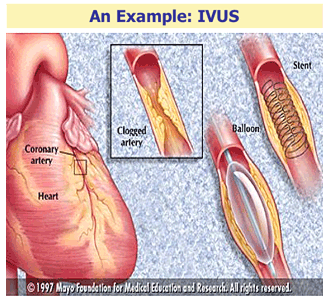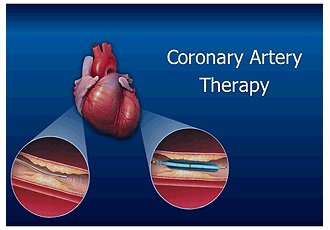|
|
So let me give you an example. This is intravascular ultrasound, which was a technology developed by three or four groups independently in the late '80s, and my group was one of those. It's part of a larger area, which is interventional cardiology, which is delivery of [cardiovascular] devices, and the stent is probably the one most familiar to people.
The stent is to open, in the simplest case, a clogged artery. So you have the balloons for angioplasty, the stenting, which is delivered along the same type of balloons to open blockages. This is sort of underappreciated. The change in life expectancy since the Second World War has been almost exclusively driven by improvements in the care of cardiovascular disease. Our knowledge of cancer is infinitely better than it was a generation ago and will get much better as we learn more of the molecular basis, but the death rates have been fairly constant for a long time.
Cardiovascular disease is the place where we have made the major improvements over the last generation—and, as seen in the life expectancies, through devices such as this, which has driven a lot of those improvements. So what is IVUS, intravascular ultrasound? IVUS is the eyes of the system because once you snake a catheter inside, you can see on X-rays where you're going, but you can't see in any kind of detail what's in there, so you're driving blind. So we developed a technology in the late '80s which, on the same catheters, can be an imaging system. That's something that will make cross-sectional images of the artery as you're pulling this through using ultrasound.
For the ultrasound that's used to look at babies and the ultrasound you use to look at the whole heart, we developed a system that could be embedded in one of the catheters used for doing the procedure that will allow you to view it beforehand, stage the procedure, evaluate the effectiveness of the procedure, and allow the long-term follow-up on the procedure. Cool stuff, the worlds we created. This is from the early '90s, when I was at Michigan and we helped found a startup company called EndoSonics out in California that developed the world's smallest imaging system.
>
01 02 03 04 05 06 07 08 09 10 11 12 13 14 15 16 17 18 19
|
|


|
